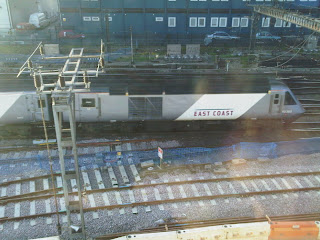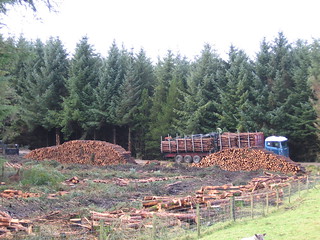Leaving Bhutan
On Sunday morning, 13th September, I left the Amankora Paro Lodge for the final trip with Tashi and Karma to Paro Airport, only a few miles away, with mixed feelings. I was delighted with all the experiences I'd collected on my trip but sad that it was coming to an end and that I'd be leaving my companions behind.
At the airport, check-in and formalities were quickly carried out and I found myself in one of the smallest Business Class Lounges I've been in anywhere. As boarding time approached, all the available seats filled and we were joined by a small party of VIPs. I noticed the extra attention the man in the VIP party obtained from the staff and after a few minutes the airport Head of Security arrived to pay his respects. I reasoned that at least departure was likely to be on time and, indeed, it was so. We climbed out of Bhutan across the mountains for our short flight to Kolkata.
Kolkata Airport
Immigration at Kolkata was only slightly delayed by medical teams interrogating arriving passengers and checking their temperature (with modern electronic thermometers). It look a little longer for the luggage to arrive but, re-united with my large case, I passed into the arrivals hall and was pleased to spot my guide waiting for me. The plan had been to spend a few hours seeing more of the city before checking-in for an internal Jet-Air flight to Mumbai where I was to connect with a Jet-Air international flight back to the U.K.
Unknown to me, a labour dispute had arisen between Jet-Air and a group of their pilots and the services had been disrupted for some days. Although an agreement had been made the previous day, the schedules were still suffering delays and cancellations. Accordingly, I readily agreed with my guide that we would walk to the adjacent Domestic Terminal and make enquiries at the ticket office. It transpired that my international flight was expected to operate, but there was doubt about my connecting flight. It was agreed that the safest alternative would be to shorten my stay in Kolkata and catch an earlier flight than intended to Mumbai. As you might expect, after a number of days of delay and cancellation, all seats were at a premium and the Ticket Office was unable to find a seat but they did arrange for me to visit the Station Manager's Office.
A young man was delegated to take me across to the office. He led me across a crowded terminal hall to the row of Jet-Air Check-in Desks. You must have noticed how there is often a baggage conveyor behind the check-in desks to carry checked baggage away and that this conveyor is provided with pedestrian bridges to allow staff to get 'behind the scenes'. Well, my young man headed straight across one of these bridges, with me following. We emerged in the 'back-office' area and gloomy corridors led us to the Station Manager's Office. This comprised a general office about 20 feer square with a couple of private offices partitioned off. Each of a dozen or so computer terminals were attended by a man or woman and, in addition, people were entering and leaving all the time, talking in loud voices on the phone or to one another. The atmosphere was rather frenetic and my heart sank. My young man spoke to one lady who shook her head and pointed to the girl at another terminal. Here, I was invited to sit whilst the operator conducted an extensive dialogue with her computer. Eventually, she gave a smile and wrote some flight details on a scrap of paper. It appeared she'd found me a seat on an earlier flight! Relieved, I thanked her and the young man conducted me back to the Ticket Office with the precious details on the scrap of paper. After a few minutes, I was in possession of an endorsed ticket for an earlier flight so my guide and I then went with the luggage to the car. There was still enough time to go into Kolkata, see a little more and return for my altered connection to Mumbai.
Preparations for Durga Puja
 "Potters' Lane", Kolkata
"Potters' Lane", Kolkata
My guide said that we would take a walking tour in "Potters' Lane" because in just two weeks it was the Festival of Durga Puja. I didn't finally work out the significance of this until later but here's a simple explanation. In Bengal, the most important Hindu deity is the Mother Goddess, Kali. Every October, Bengal celebrates the coming of Durga (Kali's maternal incarnation) in the five-day festival of Durga Puja.
Preparations start much earlier for around 300 families of artisans in the Kumartuli district of northern Kolkata known as "Potters' Lane". Representations of the deity and her family are sculpted using fresh monsoon clay applied to bamboo armatures. We walked through a rabbit warren of narrow lanes where every building was a workshop hard at work completing the figures, painting them in a most life-like fashion and dressing them in suitable highly-decorated clothing. Around one million of these statues are prepared each year and sold to homes and various community groups. Meanwhile, the community groups vie with one another to construct elaborate temporarary buildings all over the city, each using a bamboo structure which is then covered with gaily-coloured cloth forming a short-lived temple to house the statues. I was amazed both by the number and quality of statues on show and by the architectural ambition of the bamboo structures we saw around the city. At the time of my visit, whilst there were plenty of the bamboo structures, cladding the structure to make a 'tent' (the word seems very inadequate) was only just starting.
Over this period, the whole city goes a little mad and during the five days of the festival itself there is a great celebration. At the end of the festival, most of the city goes in procession to the river with the statues which, decorated with floral garlands and candles, are cast upon the waters to be carried out to sea.
Kolkata and the Jain Temple
 Parasnath Jain Temple, Kolkata
Parasnath Jain Temple, Kolkata
As we crossed the city by car, I saw more of the preparations for the festival in addition to the contrasts of everyday life which are glimpsed in my pictures. My guide was anxious to show me the famous Parasnath Jain Temple but, when we arrived, we discovered it would not open for around 15 minutes, so I went off on my own on foot to explore the adjacent immigrant area. There are many refugees from neighbouring Banglasdesh, some living in tents alongside one on the canals. A lone European on foot attracts attention but the reaction is just friendliness. The common call is "Where you from?" and nobody was begging. I returned to the Jain Temple just as it was opening. Quite a number of Indian tourists were also making a visit. The temple was built in 1867 and the main structure is highly decorated with Venetian glass, mirrors, and painted panels depicting scenes from the Jain mythology. All very interesting but, too soon, it was time to return to the airport for my altered flight to Mumbai.
Jet-Air to London
At the Domestic Terminal, I said goodbye to my guide and driver and checked in. The terminal was heaving with passengers but it didn't seem that much larger that the adjacent International Terminal. I'd got an invitation to the lounge but, mistaking the directions, I first went through security in error. I then had a couple of tricky minutes trying to persuade the security staff to let me back out so that I could try again. When I finally found the lounge, it was a fairly modest affair but still a welcome oasis from the hurley-burley outside.
The leg to Mumbai was on time and uneventful. Mumbai Airport is a substantial affair (more what I'd expected at Kolkata) and, like so many airports, currently undergoing a major building programme. My bag had been checked through to London, so I just had to get myself across to the International Terminal. I caught the free transfer bus and was surprised that it set out across the apron for some distance before going through an airport gate to get onto the public road. The public road took us to International Departures where I alighted, tired but happy.
I don't remember much of the last leg but the Jet-Air flight was comfortable and the staff friendly. It was the 23rd August when I left Heathrow. Now, 14th September, I was arriving back there having had some wonderful experiences and seen some incredible sights. I think myself very fortunate. As arranged, Alan met me at the airport and safety brought me back to Brewood.
A few aerial pictures approaching Kolkata.
My earlier pictures of Kolkata.
More pictures of Kolkata.
Pictures of the preparations for Durga Puja.































